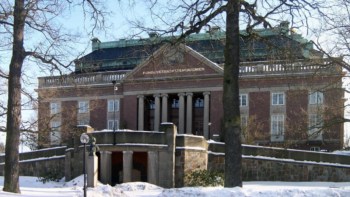Cars fitted with "adaptive cruise control" (or ACC) could help ease traffic congestion on motorways according to new computer simulations by physicists in Germany. Arne Kesting of the Technical University in Dresden and colleagues at Volkswagen in Wolfsburg found that congestion could be dramatically reduced even if just a few cars on the motorway use ACC. The work could help in reducing traffic jams in countries where building new roads is not an option (physics/0601096).

Traffic congestion is a severe problem on motorways in many European countries. Since it is not always cheap or easy to build extra motorways to solve this problem, researchers are looking for alternative ways to ease congestion. Examples include variable speed limits that depend on the volume of traffic and “ramp metering”, which restricts the number of cars entering the motorway from a slip road. Such methods are based on so-called centralized traffic management, which responds to a given traffic situation. Now, Kesting and colleagues think that traffic flow could be improved by fitting more cars with automatic cruise control.
ACC is a modified version of traditional cruise control. ACC automatically accelerates or decelerates a vehicle to maintain a fixed distance between it and the car in front and works by using radar sensors to measure the actual distance and speed difference between the two vehicles. Although only a few cars are fitted with ACC today, the proportion is likely to increase in the future as the technology improves and penetrates the car market more fully.
The German researchers carried out computer simulations of traffic — in which each vehicle is represented by a small particle — to describe the dynamics of traffic on motorways. Their approach allows them to vary the number of different types of vehicle and driving styles — such as cars and trucks, and fast and slow drivers. The simulations consider traffic flows that consist mostly of “human” drivers and a small number of “partly automated” ACC cars.
The team found that even if just 10% of all cars use ACC then congestion is dramatically eased because “traffic breakdown” — where cars come to a complete halt as in a traffic jam — is delayed (see figure). “This is a benefit to drivers because fewer people are affected and the waiting time is smaller thanks to reduced queue lengths,” explains Kesting. Moreover, the effect is scaleable so if, say, 20% of cars had ACC, then congestion would be reduced even further.
The researchers believe that it is now up to engineers to construct more efficient ACC systems because today’s designs are not yet advanced enough to behave like the ACCs described in the simulations. “That will be the starting point to realize the potential of ACC as a promising strategy for the better traffic performance outlined in our work,” says Kesting.



